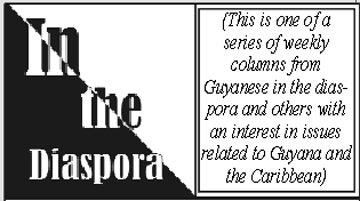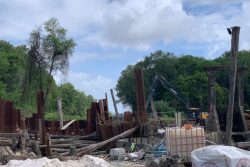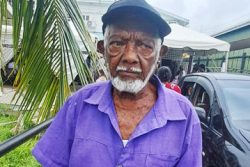By Shenella Charles
Shenella Charles is Guyanese of Afro-Guyanese and Indigenous parentage, who currently resides in Canada. She graduated with a BA in History from the University of the West Indies St. Augustine Campus in 2011 and is a recent graduate of the MA program in Latin American and Caribbean Studies at the University of Guelph. Her research to date has mainly focused on the indigenous experience and indigenous mobilization in the post-independence period in Guyana.
March 3rd, 2014 marked forty-five years since the First Conference of Amerindian Leaders came to a close. Though a very significant political event in Guyana’s early post independence history, the majority of Guyanese may be unaware or have very little knowledge about this conference. This is because there is very little published material available on indigenous Guyanese and as a group they are rarely featured in post-independence histories. While this conference may appear to be a mere footnote in Guyana’s history, for Guyana’s Amerindians it is still very relevant as there are significant continuities in the issues Amerindians faced in the early post-colonial period and issues they face today.
 The First Conference of Amerindian Leaders took place between Friday 28th February and Monday 3rd March, 1969. According to the conference report, it was held to discuss the many problems that affected Amerindians and their communities. But perhaps more significant on the government’s agenda was the need to secure Amerindian loyalty as the conference report also states, “one of the significant achievements of the Conference was a Resolution of Loyalty by the Amerindians to the Honourable Prime Minister and Government of Guyana. This resolution sponsored by ten Amerindian Captains and Councilors was unanimously passed by all the delegates present”. The main issues for the Amerindian leaders at this conference included issuing of land titles and legislation to protect land titles; land leases; adequate land for multiple purposes; adequate land to accommodate the growing population; Amerindian-State relations; and the Amerindian Lands Commission.
The First Conference of Amerindian Leaders took place between Friday 28th February and Monday 3rd March, 1969. According to the conference report, it was held to discuss the many problems that affected Amerindians and their communities. But perhaps more significant on the government’s agenda was the need to secure Amerindian loyalty as the conference report also states, “one of the significant achievements of the Conference was a Resolution of Loyalty by the Amerindians to the Honourable Prime Minister and Government of Guyana. This resolution sponsored by ten Amerindian Captains and Councilors was unanimously passed by all the delegates present”. The main issues for the Amerindian leaders at this conference included issuing of land titles and legislation to protect land titles; land leases; adequate land for multiple purposes; adequate land to accommodate the growing population; Amerindian-State relations; and the Amerindian Lands Commission.
In his opening speech at the conference, then Prime Minister Forbes Burnham made preemptive assurances to the Amerindian leaders that they would receive their lands. As the Conference Report documents, he had assured them that he had taken steps to “transfer with full title, to the Amerindian village communities settled in villages, those lands which people can farm and develop for the benefit of themselves and those who come after them”. In 1966 the Amerindian Lands Commission Ordinance had formally established the commission consisting of five persons, who were appointed by the Minister of Local Government in August, 1967. This body was charged with establishing a framework for awarding land titles to Guyana’s indigenous peoples, which was an informal conditionality requirement for the British Crown’s release of state control to Guyanese officials. Despite the new government’s attempts to assure Amerindians that they had their best interests at heart, the Amerindian leaders were still wary of their motives. This was evidenced by the various statements made by the captains at the conference. In particular, Captain John Ferreira stated that “he hoped that the recommendations of the Lands Commission would be implemented and the assurance given by the Prime Minister was not only “sweet talk.””
So where does the land titling issue stand today? While many land titles have been granted since this conference took place, in many instances this was arguably largely a result of advocacy by various groups rather than the state’s genuine willingness to fulfill the promises made at this conference. Title difficulties are still unresolved today. According to the Amerindian Land Titling Project, the Government of Guyana has set the policy objective of addressing all land titling issues by 2015. It remains to be seen if this project will fulfill its goals while engaging in genuine consultation with indigenous communities, or if the “sweet talk” will continue.
Another concern highlighted at this conference was implementation of legislation to protect Amerindian rights to land once titles had been granted. This concern stemmed from the fear that their lands could be swindled from them as well as from their lack of trust in the new government. In their speeches at the conference, Chairman Ferreira (Chairman of the Captains the Coastal Belt and the North West) and Maurice Bennett (resident of Cabacaburi and Son of Arawak priest and linguist John Bennett) suggested that after land titles are granted that the government should formulate legislation that would prevent the sale of land to any other than an Amerindian. The Amerindians wanted to ensure that their rights were protected by law as they had experienced conflict with previous governments over their land.
Today the implementation of proper legislation to protect Amerindian lands is still a cause for concern. The current legislative framework for recognizing indigenous peoples’ land rights is inadequate. A contemporary threat to indigenous land rights is mining; there has been increasing alarm over continuing and growing disregard for their legitimate rights by miners and
government agencies. In January 2013 the High Court of Guyana ruled that “indigenous groups do not have the right to expel legal miners from their land” if the miners possess a government-approved mining license. The ruling was result of a lawsuit filed by gold miner Joan Chang against the indigenous community of Isseneru for protesting her land claim. In November, 2013 the community petitioned the Inter-American Commission on Human Rights (IACHR) asking for the application of measures to uphold its rights over both titled and traditionally-owned lands. This was in light of ongoing concerns about mining claims and the perceived failure of the authorities to protect the community’s rights. No date has yet been set for the hearing of this petition.
Yet another concern for Amerindians raised at the conference was Amerindian- State relations. The last captain to give a speech at the conference, Captain Jordan Thomas, gave a firsthand account of the tense relations between the government and Amerindians after the Rupununi Rebellion. The Rupununi Rebellion had incited a wave of aggression towards the Amerindians. In his book, The Outskirts of the Earth: A Study of Amerindian Ethnicity on the Pomeroon River, Guyana, scholar Lee Drummond who conducted research in Guyana in the early post-independence years posited that “ignorance of the extent of Amerindian involvement, particularly the Makushi tribe that inhabits the north savannah, made the government suspicious of Amerindian political activity and of the presence of foreigners in the area”. According to Drummond, what the Guyana Defence Force activities involved exactly is an open question, but he opines that “it is significant that some Guyanese Amerindians Leaders believed that the Guyana Defence Force operation involved the deaths of numerous Makushi.”
Present day Amerindian-State relations show a thread of continuity. Various forms of human rights abuses are perpetuated against Amerindians. There have been numerous cases of police brutality against Amerindians in recent years; one of the most highlighted instances occurred in October 2009 when police the brutally tortured a 15 year- old Amerindian boy, dousing his genital area with a flammable liquid which they set alight. In addition to this case, Amerindians are often victimized by those who police interior regions. One such instance was vividly depicted in a video that surfaced in March, 2013 showing police forces victimizing Amerindians. Sadly, in many cases the perpetrators of discriminatory and violent acts against Amerindians are not brought to justice. This illustrates the overall lack of equal rights for Guyana’s indigenous peoples.
Guyana’s indigenous peoples have suffered insomuch as they have been used by colonial governments as well as governments in the post-independence era. The government at the time of the conference (and subsequent ones) had promised “improvement” for Amerindians but their general social status has remained relatively the same. Amerindians continue to be depicted as largely a passive and malleable people, however, this conference (and subsequent fora) illustrates that they are not voiceless. Though they are often viewed as a cultural rather than a political entity, they are far from ignorant of the political affairs of their country and have been engaged in the prosaic but constant struggle with the Guyanese government. If Amerindians are truly to be considered seriously, a genuine attempt must be made to review the laws which now exist and they must be actively involved in any decision making process that affects them.





